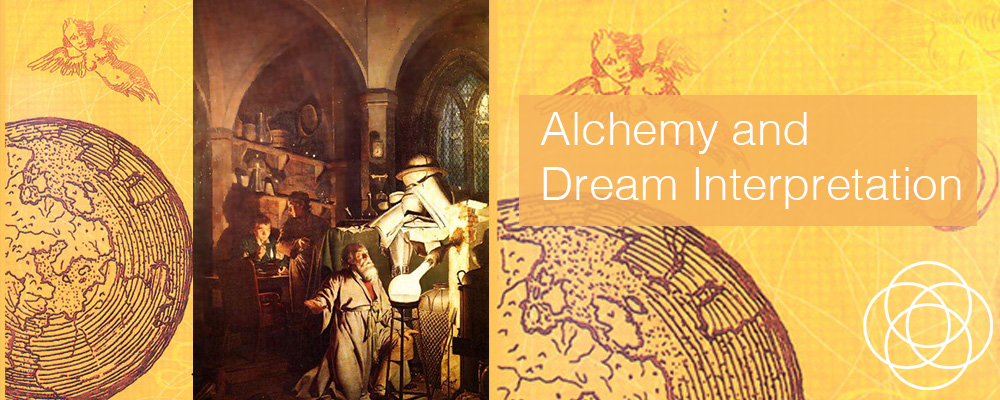In mediaeval times, alchemy was the quest to understand and master the elements of nature and to demonstrate this mastery by turning base metal into gold. In its study of elements and substances, real and conjectured, it is often seen as being the forerunner of chemistry and perhaps quantum physics. But it was far more than a pre-scientific or material quest. The mental and physical discipline required to dedicate years towards the seemingly impossible task of transforming base metal into gold tested the spirit, making of alchemy a spiritual discipline. The trials each apprentice encountered advanced his spiritual understanding of himself and the world. The base metal was his self and his experience of life. The task was to transform his self as well as his waking life into gold. The gold, symbolising the sun (consciousness and enlightenment), was his personal and spiritual transformation.
The main outcome of transmuting physical matter into gold and to transforming the base soul was the Philosophers’ Stone. The Philosophers’ Stone (also known, among many other names, as the lapis elixir) was the holy grail of alchemy. The possessor of the stone was promised eternal youth, freedom from death or sickness, and total inner knowledge, including that of how to transform base metal into gold. The Philosophers’ Stone could never be dissolved or lost – once it was found. But first, it had to be found.

Isaac Newton was both scientist and alchemist in his search to understand the relationship between the physical and the spiritual.
Alchemists believed matter was made up of four elements – earth, air, fire, and water – held together, or unified, by a fifth element, invisible to the uninitiated. This fifth element was known as the quintessence. It was the secret of secrets with which one could control nature. The quintessence and the Philosophers’ Stone were symbols for the same grail.
An important part of alchemy, then, was to find the Philosophers’ Stone, the grail or the quintessence – then all was possible, physically, mentally, emotionally and spiritually.
Initiates, both men and women, practised alchemy through study and the practical work of mixing elements, compounds and substances, encapsulating their findings in symbols, drawings and mystical formulae. Much of the work was carried out in laboratories – places equally fitted out for practical and mystical activities. The symbols and mystical formulae constituted a secret language, a way of hiding the metaphysical and spiritual work of alchemy from the attention of the church and the uninitiated.
As an example, an important compound in alchemy is vitriol, a sulphate or sulphuric acid that burns away matter. Part of its function was to burn away matter to reveal the quintessence.
The word vitriol is composed of the first letters of the words in this Latin phrase:
‘visita interiora terrae rectificandque invenies occultum lapidum’.
This translates as ‘Visit the interior of the earth and, by rectifying, you will discover the hidden stone.’
The metaphysical meaning of vitriol in mediaeval alchemy was the process of visiting the inner self to purify the soul by burning away the dross, thereby discovering the secret of life itself.
Dreams, once interpreted, reveal the inner self in all its tarnished and bruised beauty. By interpreting our dreams, we can then act on the insights we gain about ourselves to burn away the tarnish, heal the bruises and hurts, and polish the soul so it shines.
In this way, we can become masters of our spiritual, emotional, mental and spiritual worlds.
Our dreams can be seen as being like base metal, and the process of interpreting them as a process of spiritual discipline.
The insights we gain about ourselves as a result are all part of the grail, the Philosophers’ Stone, the magic with which we can choose to transform our lives.
***
Dream alchemy is the process of working with your dreams to transform your spiritual, emotional, mental and physical life into alchemical gold.
The dream alchemy practices in this book work directly on your unconscious mind to ‘reprogram’ unconscious beliefs, thoughts and patterns that are not working well for you and your life. These practices are successful because they employ the language of your unconscious mind: and your unconscious mind responds.
This post is an extract from:
Dream Alchemy (Updated and retitled The Dream Handbook, pub Hachette in Australia and pub Little Brown in UK, 2018)
Jane Teresa Anderson,
2nd edition pub Hachette,
pages 9-11
Post script:
My maiden name was Newton. I was many years into my work as a scientist turned dream alchemist before I learned that Isaac Newton devoted so much of his life to the study of alchemy.


5 comments on “Alchemy and dream interpretation”